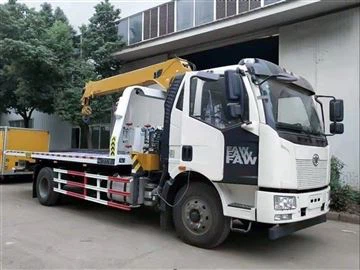Lightning Loader: Transform Your Website’s Performance

Introduction
The speed of your website is a crucial factor that can significantly affect user experience and search engine rankings. As an online business owner or a web developer, you must find efficient ways to enhance your site’s performance. One of the newest tools in this domain is the Lightning Loader, an innovative technology designed to optimize loading times and decrease bounce rates. In this article, we will explore Lightning Loader in depth, discussing its features, benefits, and best practices to implement it effectively. Whether you’re a novice looking to improve your website or a seasoned pro wanting to optimize your existing site, this comprehensive guide will provide valuable insights.
What is Lightning Loader?
Lightning Loader is a specialized technology that streamlines web page loading times. It achieves this by optimizing the delivery of content, particularly images, scripts, and stylesheets, ensuring that users have an exceptional experience right from the start. By integrating smart loading techniques, Lightning Loader helps websites load faster, leading to better user engagement and improved search engine optimization (SEO).
How Does Lightning Loader Work?
This performance enhancement tool uses several techniques to optimize loading processes, including:
- Asynchronous loading: It prioritizes essential elements and allows non-critical resources to load later, thereby reducing initial load time.
- Lazy loading: Images and videos are loaded only when they enter the viewport, saving bandwidth and improving loading speed.
- Minification: It compresses HTML, CSS, and JavaScript files to reduce their size, which accelerates loading times.
Benefits of Using Lightning Loader
1. Enhanced Speed and Performance
Lightning Loader significantly improves website speed by applying advanced loading techniques. Faster loading times contribute to higher user satisfaction and retention. A study found that websites that load within 2-3 seconds have lower bounce rates compared to those taking longer.
2. Improved SEO Rankings
Search engines, particularly Google, prioritize fast-loading websites. By implementing Lightning Loader, your site can achieve better search rankings, resulting in more organic traffic.
3. Better User Experience
A well-optimized website creates a positive user experience. This leads to longer on-site durations, lower bounce rates, and potential conversions. Lightning Loader enhances these factors significantly.
4. Cost-Effectiveness
By reducing bandwidth usage through optimizations like lazy loading, you can lower hosting costs. This is particularly beneficial for websites with high traffic or media-rich content.
5. Compatibility with Various Platforms
Lightning Loader works seamlessly with a wide range of Content Management Systems (CMS), making it versatile and easy to implement regardless of the technology stack used.
How to Implement Lightning Loader
1. Assessment of Current Performance
Before implementing Lightning Loader, analyze your website’s current performance using tools like Google PageSpeed Insights, GTmetrix, or Pingdom. These tools will help you identify areas needing optimization.
2. Choose the Right Plugin or Library
If you’re a WordPress user, navigate to the plugin repository and look for Lightning Loader plugins. For other platforms, research libraries that offer similar functionality and choose one that meets your site’s specific needs.
3. Configure Settings
After installation, configure the settings according to your website’s requirements. This could include specifying which elements to defer loading or which images should be lazy-loaded.
4. Testing and Monitoring
Once you implement Lightning Loader, conduct thorough testing to ensure that it doesn’t affect your site adversely. Monitor performance over time, making necessary adjustments to optimize speed even further.
5. Regular Updates and Maintenance
Technology evolves rapidly, and website requirements change as well. Regularly update your Lightning Loader plugins and libraries to ensure compatibility with your site’s other components.
Practical Examples of Lightning Loader in Action
Example 1: E-commerce Store
An e-commerce store with multiple product images and heavy scripts can benefit immensely from Lightning Loader. By incorporating lazy loading, products become visible to users without waiting for all images to load initially. This can reduce load times by 20-30%.
Example 2: Portfolio Website
A graphic designer’s portfolio site can use Lightning Loader to showcase projects effectively. By limiting the initial load to key images and lazy loading others, visitors can quickly browse without lag, enhancing their experience and encouraging potential clients to inquire about services.

Example 3: Blog Sites
Bloggers can improve user engagement by speeding up their content delivery. With Lightning Loader, critical text loads first, while images load as the reader scrolls down. This keeps the reader engrossed without delays.
Common Mistakes to Avoid When Using Lightning Loader

1. Neglecting Initial Testing
Skipping the initial performance assessment may lead to misunderstanding the impact of Lightning Loader on your site. Always test before and after implementing changes.
2. Misconfiguring Plugins

Improper configuration of settings can lead to issues such as broken images or delayed content. Follow guidelines and documentation carefully to avoid these pitfalls.
3. Ignoring Mobile Optimization
With an increasing number of users accessing websites via mobile devices, ensure Lightning Loader settings cater to mobile optimization as well.
4. Failing to Monitor Results
Performance is not a one-time task; continuous monitoring is vital for sustained improvement. Regular checks help identify any degradation in performance.
Understanding Potential Challenges with Lightning Loader
1. Compatibility Issues
While Lightning Loader is designed to work with various platforms, certain plugins or themes may conflict. Check compatibility before implementation.
2. Learning Curve
New users might encounter some challenges in adjusting to the technology. Utilize resources and support forums to navigate initial hurdles.
3. Access to Technical Support
Depending on the chosen plugin or library, available support may vary. Ensure you select a reputable source with robust support options.
Future Trends in Web Optimization
1. Continued Focus on Page Speed
As user expectations increase, so will the importance of page load speed, making tools like Lightning Loader essential for all websites.
2. Enhanced Mobile Experience
With mobile users dominating internet traffic, techniques that target mobile optimization will become even more critical.
3. Integration with AI and Machine Learning
Future optimization tools may leverage AI to learn user behavior, further customizing loading techniques based on historical user interactions.
Frequently Asked Questions (FAQs)
1. What type of websites benefit most from Lightning Loader?
All types of websites can benefit, but e-commerce, blogs, and media-rich sites experience the most significant improvements in load times and user engagement.
2. Can Lightning Loader affect my SEO ranking?
Yes, faster loading times associated with Lightning Loader can lead to improved search engine rankings, as speed is a known ranking factor for Google.
3. Will implementing Lightning Loader require coding knowledge?
Many plugins are user-friendly and do not require coding knowledge. However, understanding basic web concepts may help during setup.
4. Is Lightning Loader suitable for mobile sites?
Absolutely! In fact, Lightning Loader is essential for mobile sites, as optimizing loading times is crucial for mobile user experience.
5. How can I measure the performance changes after implementing Lightning Loader?
Use performance testing tools like Google PageSpeed Insights or GTmetrix to measure loading speed and other performance metrics before and after implementation.
6. What should I do if my site breaks after implementing Lightning Loader?
If your site experiences issues, revert to the previous settings or disable the plugin/library temporarily. Assess the configuration, and consult documentation or support for troubleshooting help.
